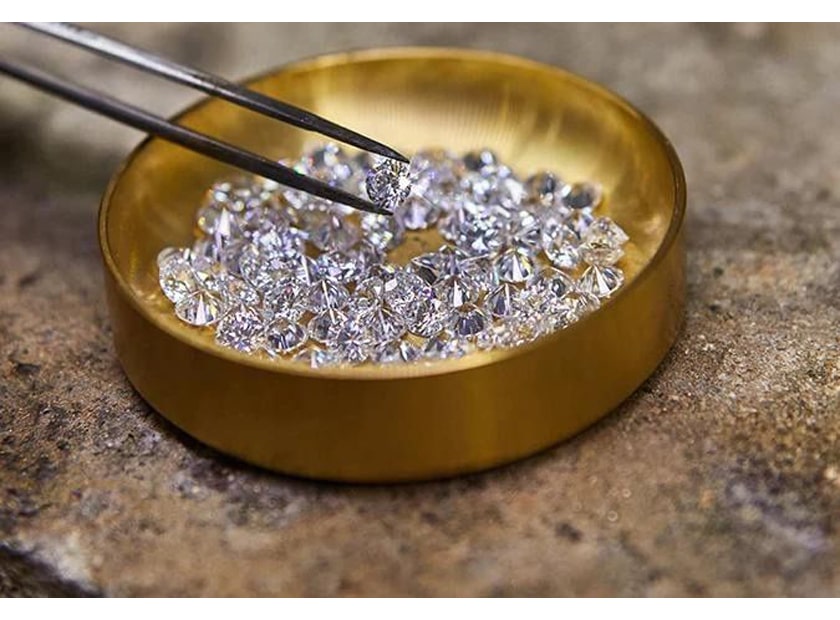Diamonds have long held a special place in human history, symbolizing love, commitment, and luxury. Natural diamonds have been deeply formed on Earth for millions of years, but recent technological advancements have given rise to lab-grown diamonds, challenging the traditional diamond industry. This article explores the distinctions between natural diamonds and their lab-grown counterparts, shedding light on the ethical, environmental, and economic aspects of each.
The Origin Story

- Natural diamonds are born deep within the Earth's mantle, where intense heat and pressure cause carbon atoms to crystallize into the coveted gemstone. The journey from the cover to the Earth's surface involves volcanic activity, pushing diamonds up in rare Kimberlite pipes. This natural geological process takes millions to billions of years, making natural diamonds a fine and precious resource.
- In contrast, lab-grown diamonds are created in controlled environments using advanced technological processes. Two primary methods, high pressure and high temperature (HPHT) and chemical vapor deposition (CVD), mimic the conditions under which natural diamonds form. HPHT replicates the high-pressure conditions, while CVD involves the carbon deposition of atoms onto a Substrate. The outcome is a diamond with the same optical properties, chemical, physical, and natural diamond.
- One of the longstanding controversies surrounding natural diamonds is the issue of blood diamonds, and these diamonds come from regions where armed conflict and human rights abuses fund rebel movements. The Kimberley Process Certification Scheme was introduced in 2003 to curb the trade in conflict diamonds, but its effectiveness has been questioned due to loopholes and lack of stringent monitoring.
- Lab-grown diamonds, on the other hand, offer a more ethical alternative. As they are manufactured in controlled environments, there is no risk of them being associated with human rights abuses or conflict. Consumers seeking an ethically sourced and responsible option often turn to lab-grown diamonds, contributing to a shift in the industry's landscape.
- The environmental impact of mining natural diamonds is a significant concern. Mining operations can lead to deforestation, habitat destruction, and ecosystem disruption. In addition, the energy-intensive processes involved in extraction, transportation, and cutting contribute to the carbon footprint of natural diamonds. The social and environmental costs associated with traditional diamond mining have led to increased scrutiny and calls for sustainable practices.
- Lab-grown diamonds are often marketed as a more environmentally friendly option. While they require energy for production, the environmental impact is generally lower than traditional mining. Additionally, the controlled setting of lab-grown diamond production minimizes the risk of habitat destruction and pollution. As technology advances, the industry is working towards reducing the energy footprint of lab-grown diamonds, further enhancing their environmental credentials.
- Countries rich in diamond deposits often rely on diamond mining as a significant source of revenue. However, the economic benefits are not evenly distributed, and some regions experience the negative consequences of resource exploitation, including wealth disparity and economic dependence on a single industry. The fluctuating demand for natural diamonds can also lead to economic instability in diamond-dependent economies.
- The rise of lab-grown diamonds has introduced a new economic dynamic to the diamond industry. As the technology becomes more widespread, it could disrupt traditional diamond mining economies. However, the growing demand for lab-grown diamonds also opens up new economic opportunities, particularly in synthetic diamond research, development, and manufacturing. Price and Market Perception
- The rarity of natural diamonds contributes significantly to their high market value. The perception of a natural diamond as a timeless and exclusive symbol of love has sustained its demand over the years. Each natural diamond's unique geological journey and individual characteristics add to its mystique and allure.
- C.V.D Lab-grown diamonds possess the same properties as natural diamonds and are often priced lower. The controlled production process allows for more predictable output, reducing the uncertainty associated with mining. However, as technology improves, the price gap between natural and lab-grown diamonds may narrow, potentially reshaping consumer preferences.
Natural Diamonds:

Lab-Grown Diamonds:

Ethical Considerations
Natural Diamonds:
Lab-Grown Diamonds:
Environmental Impact
Natural Diamonds:
Lab-Grown Diamonds:
Economic Considerations
Natural Diamonds:
Lab-Grown Diamonds:
Natural Diamonds:
Lab-Grown Diamonds:
Conclusion
The suitable choice between lab-grown and natural diamonds is now wider than considerations of aesthetics and budget. Ethical, environmental, and economic factors now play a significant role in shaping consumer preferences. While natural diamonds hold a special place in the hearts of many, the rise of lab-grown diamonds represents a shift towards sustainability and ethical consumption in the jewelry industry. As technology advances and awareness grows, consumers are free to make informed choices that align with their values, ensuring that ethical or environmental concerns do not tarnish the sparkle in their diamonds.

























Validate your login